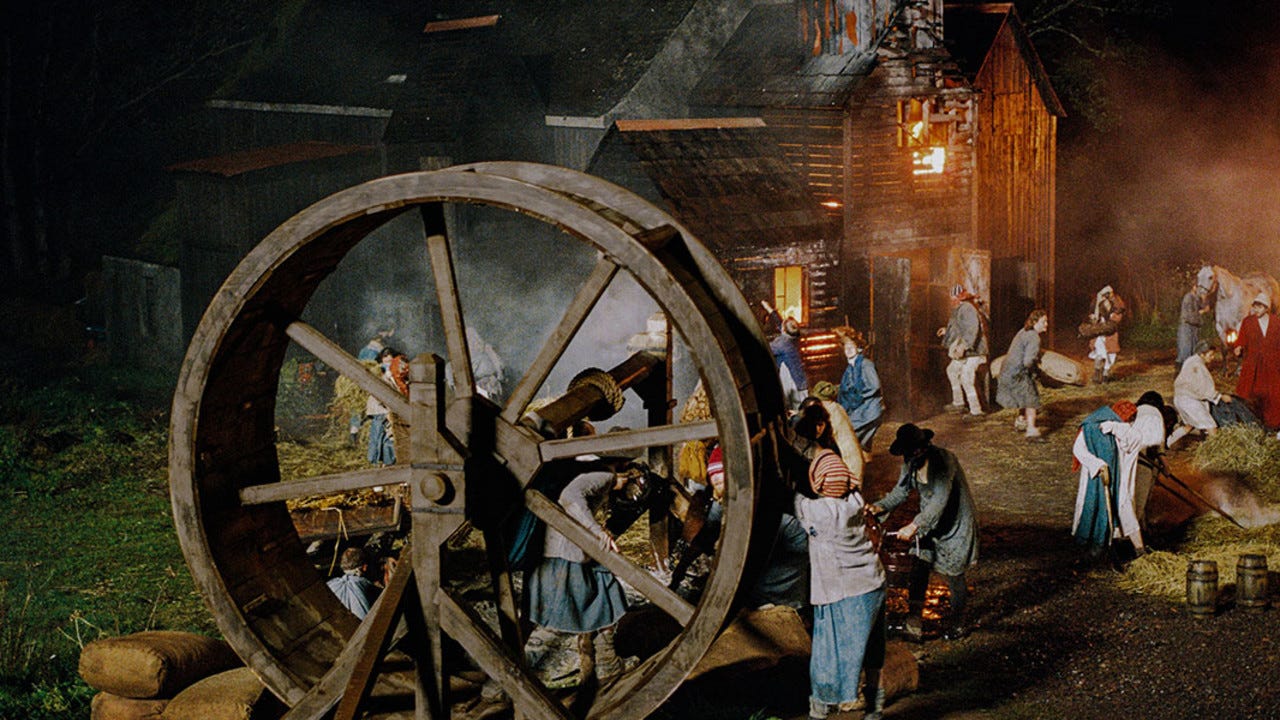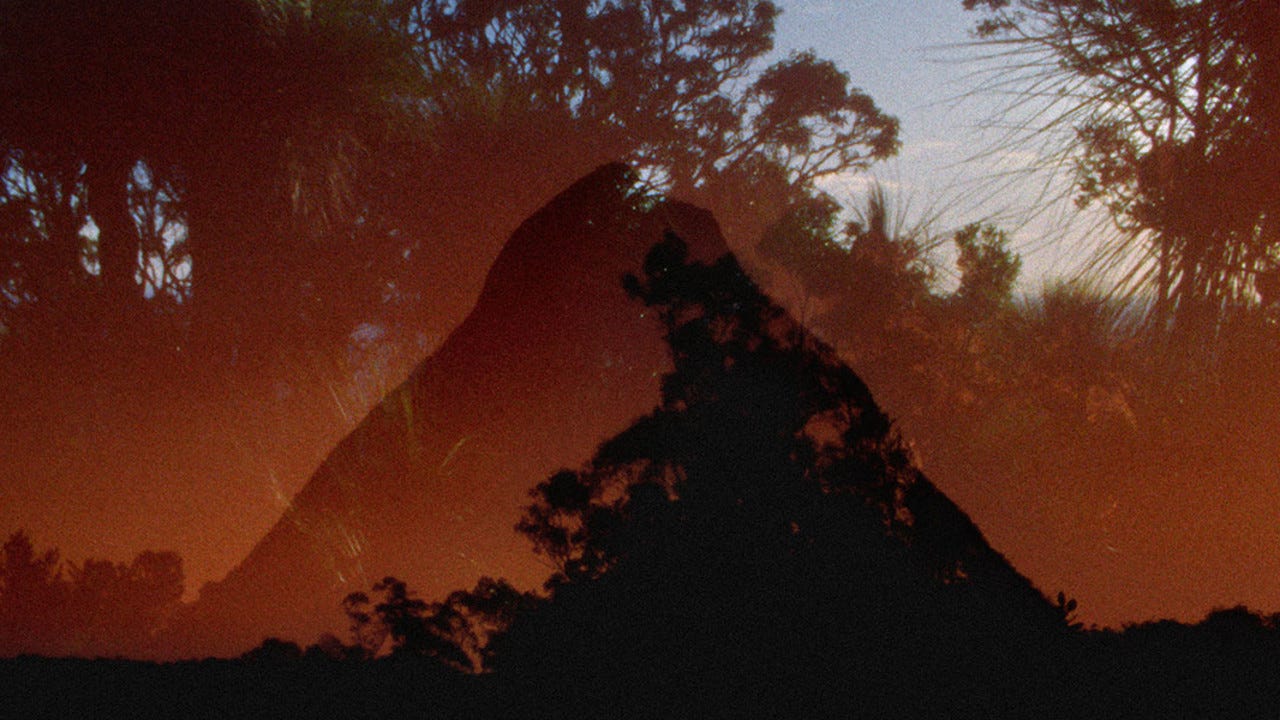Minimal sleep, some blogging, a shower, then out the door, hop on my bike, off to a screening. So started Day Two at the 2024 Toronto International Film Festival. It was a day that began and ended with one of the great filmmakers of our time, and a surprise as well, but I’ll get there. Doing the festival thing, especially at one as big and wide-ranging as TIFF, brings opportunity for discovery. There are the big ticket movies gunning for Oscars, and the hot art house pictures with advance word from other large festivals, or simply made by acknowledged masters. But there are also the films you know nothing about, from filmmakers you don’t know or hadn’t paid attention to, sometimes from parts of the world that don’t get talked up very much in the world of cinema. It’s in those spaces where you’re taking the biggest risks, and often the films are below the radar for a reason. Not bad necessarily, but let’s say, inessential. The kind of movies you’re liable to see in between 30 other movies and soon forget they exist. Sometimes, though, you find something good. Really good even. A discovery.
My first film of the day was a presser for Jia Zhangke’s Caught by the Tides. Among my most anticipated of the festival, Jia’s film, assembled largely from unused footage from earlier films, is something like a capstone on his career-long project chronicling a rapidly developing and changing China in the modern era. Something like a collage film, though as my friend Zachary Goldkind said, it’s more like an essay, finding subjects over time in all that footage, signals of progress and the people’s interaction with it, illustrating change. Narrative strands develop, with the aid of intertitles, of two souls split by the growth of the country, finding each other again in our present time of COVID fears and advanced technology. It’s a moving film, as portrait of a nation and as meta-textual portrait of a career. It’s also moving in its use of form, watching all film stocks scanned at varying levels of quality, reflections of a medium as at once physical and ethereal, giving way to the sharp clarity of digital. And more than anything it’s moving as a portrait of people, growing older, their lives intertwined with each other and with the country as a whole, adrift in the forward motion of building and building and building, which presents its own kind of destruction. And somewhere in there is the spirit of humanity, pushing on in its futile endeavour in the universe, creating meaning from connections and missed connections alike, and the new world we are constantly making for ourselves.
Harvest is the new English-language film (though someone decided the dialect and thick Northern accents apparently necessitated subtitles anyway) from Greek director Athina Rachel Tsangari. Friends of mine are completely in the tank for Tsangari, who was once more closely associated with recent Hollywood favourite Yorgos Lanthimos. I’m not so much, though I’ve appreciated her work. This film, set in an English village some very, very long time ago, shot on unmatted 16mm by Sean Price Williams, and starring Caleb Landry Jones and Harry Melling, among others, is one I will admit to struggling with. Maybe I was just tired, but its slow pacing felt had me itchy, and its lugubriousness was hard to take, seemingly with little reward. Though, even in the few hours after watching it, the story of a tiny, poor community torn apart by an act of arson, superstition, class conflict, modern progress, and simple human faults has sat with me well. That’s not nothing. Its tone—weird and sad and funny and wicked and just a little hopeful—is already making me want to revisist at some point, perhaps when I’ve had a little more sleep, and I didn’t just come out of another head-spinning, masterful work of art. To give it its due.
The Wavelengths Shorts programmes (three in all this year) have become something of a hot ticket of late. Given just one screening each, in one of the smallest theatres at the festival, an expected crowd of facypants experimental film lovers gathered for the first of them. It was a very good selection. The first, a 3D short called Revolving Rounds, by Johann Lurf and Christina Jauernik, was some of the best 3D work I’ve ever seen. Shot on both 35mm and 16mm film, it literally takes the viewer inside a shot of a pea plant, through the celluloid itself, its layers of coloured emulsion, and back out the other end. A mesmerizing experience. Lawrence Abu Hamdan’s The Diary of a Sky was next, chronicling life in Lebanon under the regular watch of Israeli aircraft violating the country’s airspace. It’s an examination of the political situation of a people besieged from the outside by a hostile neighbour, as well as the country’s own internal corruption, and the global economies that sustain both, all while illustrating, through paranoid cellphone footage of the skies and the constant drone of fighter jets overhead, the literally heart-stopping anxiety of living under that dreadful noise. October Noon, by Francisco Rodríguez Teare, captured me less. A film about the wave of student protests in Chile a few years back, its experimentations read as “art project” to me. Not without merit, but lacking in much more than symbolism, and if I’m being honest, symbolism doesn’t do it for me (maybe I’ll write about that some time). A Black Rectangle Too, by Rhayne Vermette was only two minute, but lovely still. Made from tiny squares of cut up celluloid taped to clear film leader, it’s a literally kaledescopic bit of movie. Not much to it, but what more do you need? Finally, Malena Szlam’s Archipelago of Earthen Bones — To Bunya, closed out the programme in great, trippy style, with its glorious multiple-exposure photography of beautiful mountainous forests in Australia.
After a bit of a break, and catching up with a friend, I went on to see On Becoming a Guinea Fowl, the new feature from Zambian I Am Not a Witch filmmaker Rungano Nyoni. I knew next to nothing about the film going in, other than the pedigree, though I’d somehow forgotten that it was among the films I’d had my eye on. Luckily, I snagged a ticket, and was glad I did. Beginning with a funny, off-kilter tone, the movie is about a Shula, played wonderfully by actress Susan Chardy in her film debut, who finds the dead body of her uncle lying in the middle of the road at night as she’s driving homoe from a party. The familial connection means involving more family members, who she treats in dryly funny manner as a constant burden, a headache. As everyone acts out their emotions in big, performative ways, Shula sits silently, disengaged. But as the film progresses, and new things are revealed about the uncle and about the family as a whole, we begin to understand the reasons for Shula’s demeanour. It builds to a very dark view of family as a store for pain and hurt, though also a source of deep, protective bonds, would that all the performance could stop and actual listening and action take place.
In truth, I should have left it at those four screenings. I was very tired. Stupid me, though, I figured I could fit another movie in there, though by quickly looking at what was screening late at night (and had tickets available), I felt a bit starved for options. I gravitated in the end to a film called Bound in Heaven, the debut directorial feature from Huo Xin, who’s had a good career as a screenwriter in China, including co-writing Kung Fu Hustle. It also features a trio of well-known Chinese stars, Ni Ni, Zhou You, and Liao Fan, who many will know from Black Coal, Thin Ice, Ash is Purest White and The Wild Goose Lake. Huo and Liao were both on hand for the world premiere screening in the small Lightbox 4. To my amazement, joining them in the audience was Jia. I have rarely felt in the presence of such greatness. (Turns out it’s along with starring a couple of Jia collaborators, it’s also edited by Jia regular Matthieu Laclau, who was also onstage).
Then we get to the film itself, the first film I’d call a discovery this festival. It is the story of a woman in an abusive relationship, who meets and falls for a man she later learns has terminal cancer. It’s like something out of a Jon Green novel, and in the Q&A afterward, Hou implied she felt the same way about the novel on which this was based, though she also found a spark in that story for something more resonant. Its big, broad, emotional strokes are tempered by a very adult (and very hot) romance between two severely broken individuals, heightened by filmmaking bursting with feeling, with longing, with excitement, with sadness. A Faye Wong concert tour becomes a focal point for the two lovers, and the film features refereces to Wong Kar-wai, including one shot right out of Fallen Angels. Like Wong, Hou finds a way to make the melodrama of life into something outright painterly onscreen. Digitally shot, and grainless, the film finds texture instead in its colours, which are not quite like anything I’ve ever seen before. Bright, but pastel, the blues and greens and yellows in particular took my breath away at various moments throughout. Combined with an equisite use of wide screen and wide lenses, it’s clear that Hou and her collaborators are working with a real eye. A shot toward the end, with two people standing some distance apart, on different planes, at different levels, basically broke me. And then the movie saw fit to repair me with another kind of shot I’ve never seen before, and which can only be seen to be believed: drone footage literally zooming through fireworks in the sky. I was buzzing.








